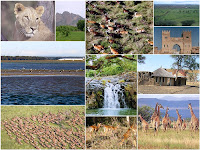The Matthews Mountain Range: Kenya's Wonder 'Island' Gets Attention
Very few people know of or have ever heard of Kenya's pristine Matthews Mountain Range, also known as the Lenkiyio Hills. It is over 2,700m above sea level; is densely covered with forest; is one of the wildest parts of Kenya and has many, never known before species of plants and animals. But now, it is getting attention; an expedition - organized by the Northern Rangelands Trust and Namunyak Conservancy, is underway. It is funded by The Nature Conservancy and taking part too, in the expedition - are scientists from the National Museums of Kenya and the TNC:
This expedition and the remote range getting such attention, may be good and what this gem of a place needs; at the same time - it will undoubtedly attract unneeded attention to a very isolated, delicate natural wonder. Very hopefully: the Kenyan government with the help of conservationists like the Greenbelt Movement, will see to it that the Matthews Mountain Range continues to be protected and preserved.The Matthews Range of mountains rises from the arid brown plains of northern Kenya like a green tropical island; its peaks looming above the dusty haze blanketing the otherwise featureless landscape.
The flat lands that surround it stretch for almost 100km in any direction, leaving the Matthews blissfully isolated.
It has been this way for at least 10 millennia, the dry sea lapping against its shores - sometimes rising, sometimes falling in a tide driven by periods of global warming and cooling that has always kept it cut off from the rest of East Africa's forests.
But that isolation has also helped protect the Matthews from any serious human encroachment.
The Samburu tribes who graze their cattle in the surrounding grasslands have for most of their history left it largely untouched, retreating there only when drought forces them to search for grazing or when the elders harvest plants used for traditional medicines.
It is what the scientists have dubbed a "sky island": a remarkably untouched patch of tropical highland forest that has been allowed to evolve in its own direction, free of influence from the rest of the region by that dry gulf too vast for most plants and insects to cross. Read more from the BBC


